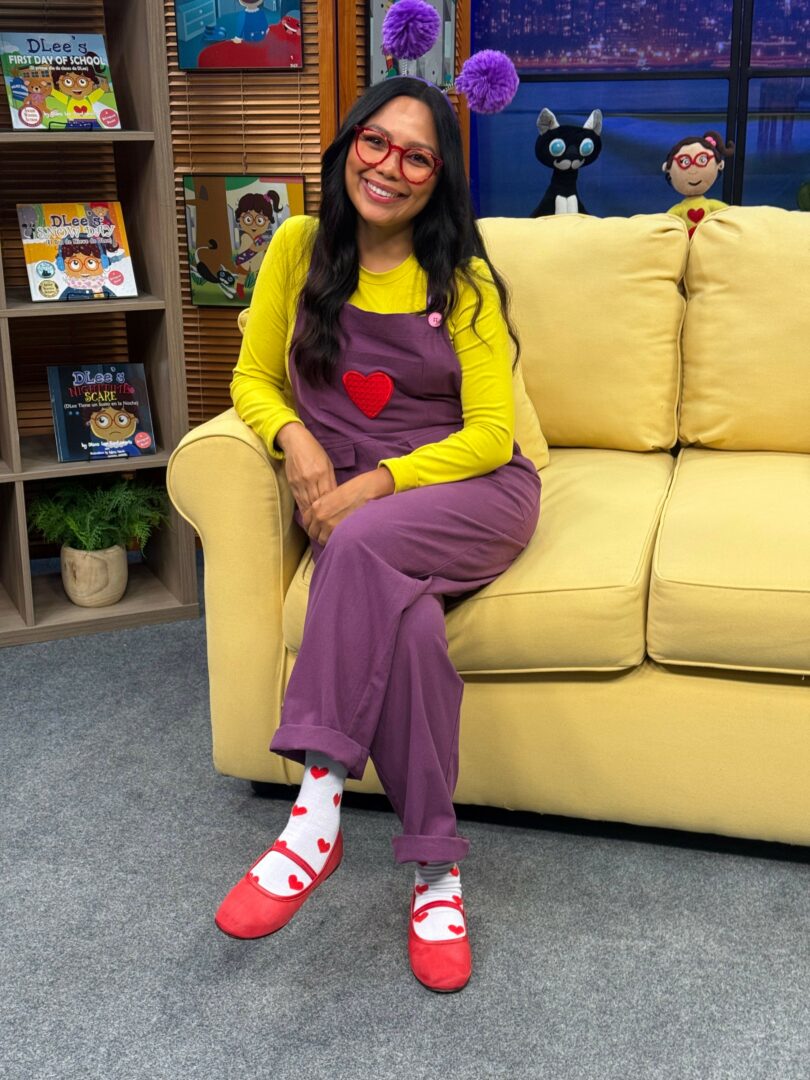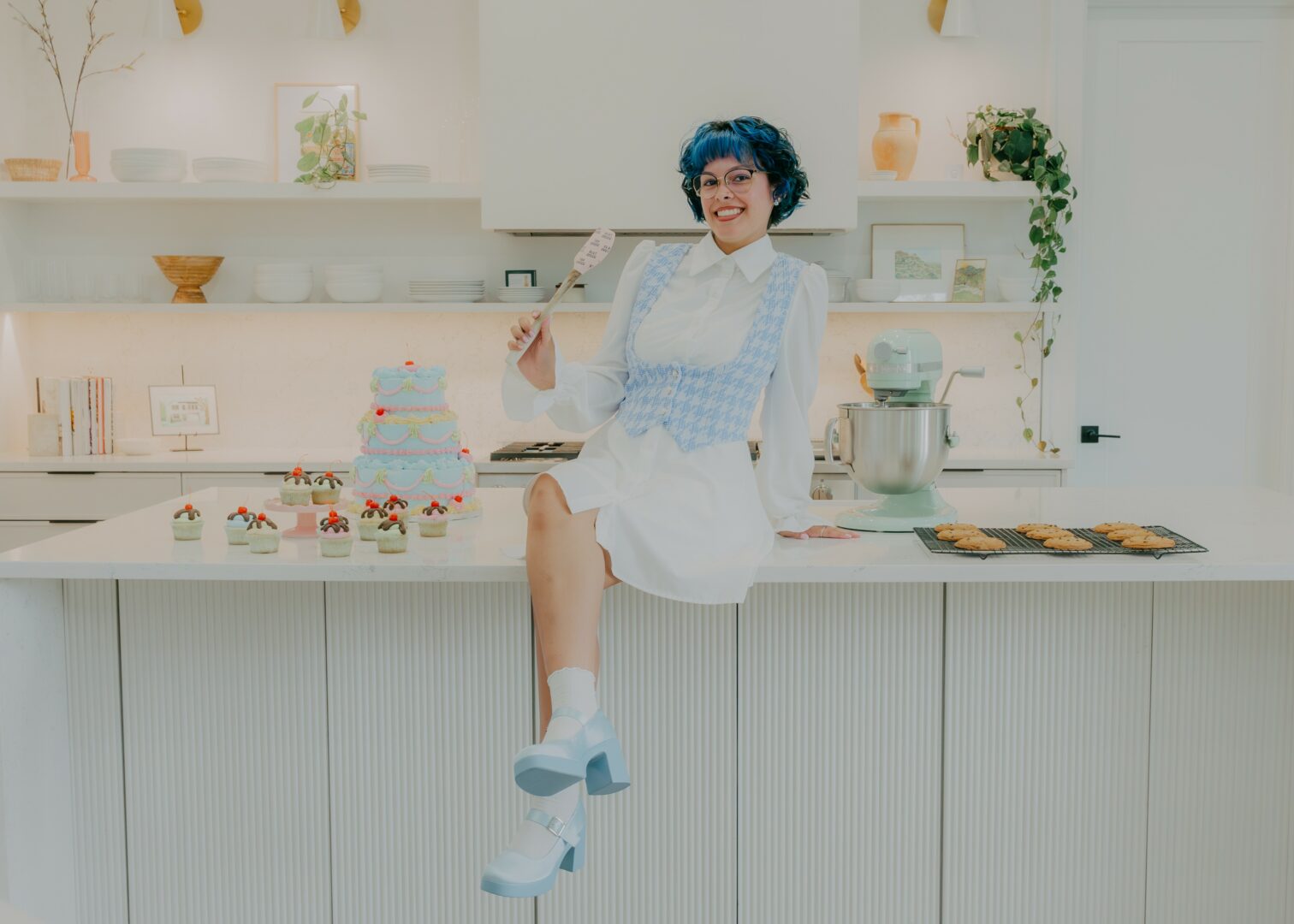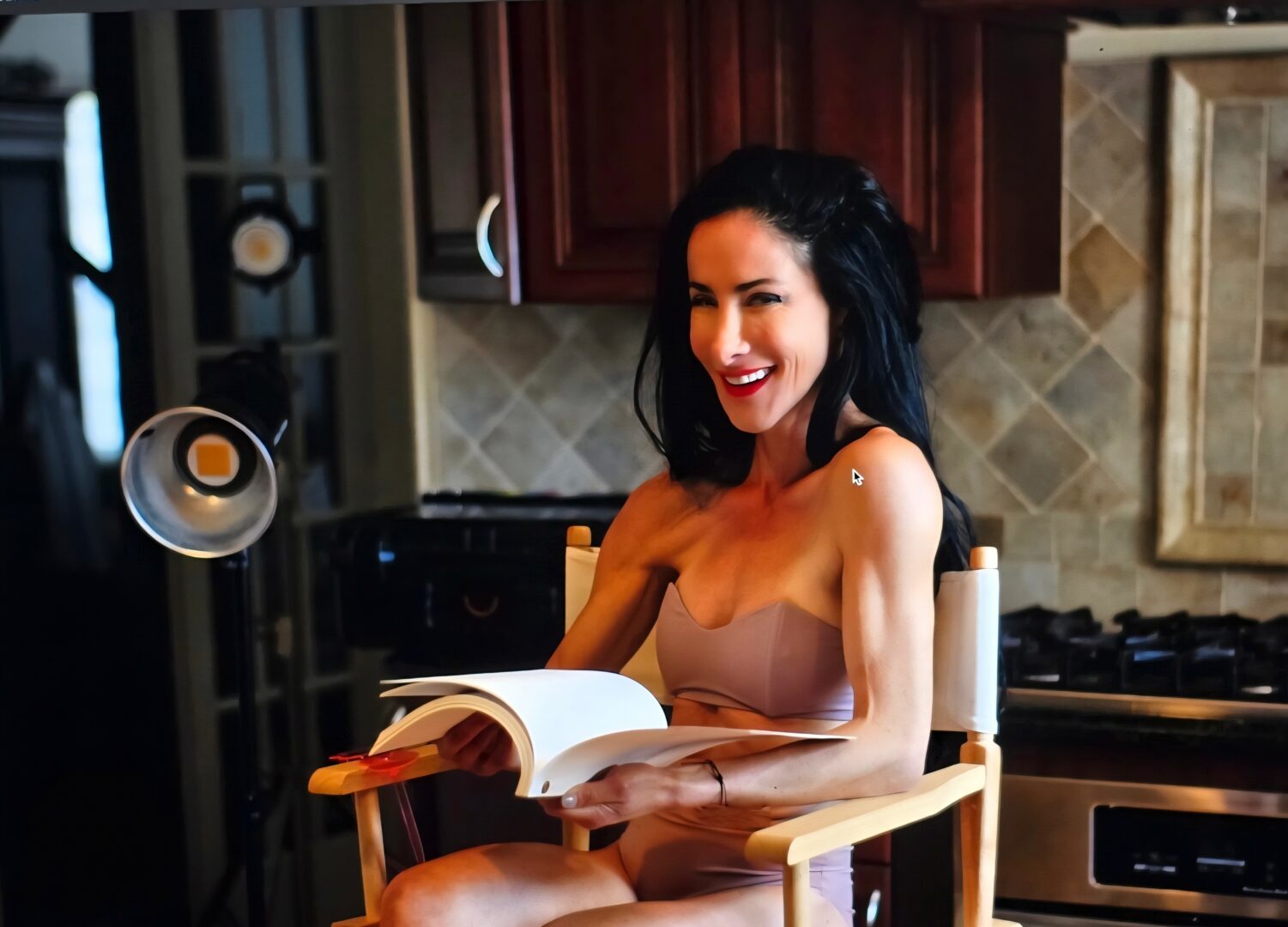We recently connected with Ananya Goswami and have shared our conversation below.
Ananya, we’re so excited for our community to get to know you and learn from your journey and the wisdom you’ve acquired over time. Let’s kick things off with a discussion on self-confidence and self-esteem. How did you develop yours?
As both a Kathak Artist and a Visual Artist, my journey to developing confidence and self-esteem has been shaped by the creative process itself — through movement, rhythm, and paint.
As a Kathak Artist
In Kathak, confidence came through practice (riyaz) and performing. Repeating the same movements, mastering the taal, and immersing myself in storytelling gradually gave me a sense of command over my body and expression. Each time I stepped on stage, I learned to channel my nervousness into abhinaya (expressive storytelling) — transforming vulnerability into connection with the audience.
Over time, I realized that confidence in Kathak is not just about technical precision, but about owning my interpretation of a piece — expressing emotions in my own voice. This sense of authenticity became a key part of my self-esteem. My gurus’ guidance, the energy of live performances, and the rich history and philosophy of Kathak all gave me a deeper sense of pride and belonging within the art form, which gradually strengthened my self-belief.
As a Visual Artist ( Painter)
As a visual artist, the journey was more introspective but equally transformative. With every canvas, with every medium, I faced moments of self-doubt — questioning if my vision would translate into form. But painting taught me to trust the process. Each brushstroke became a dialogue between my inner voice and the outer world, and slowly I learned to embrace imperfection as part of creativity.
Unlike Kathak, where I perform in front of an audience, painting allowed me to work in solitude, giving me space to explore without judgment. This solitude helped me understand myself better, building a quiet, internal confidence — a belief that my perspective and vision are valid. Sharing my work publicly, whether through exhibitions or social media, was another significant step in developing my self-esteem. Seeing others connect with my work reinforced that my voice had value.
Combined Confidence
Together, these two practices — Kathak and painting — have shaped my confidence holistically. Kathak gave me the courage to be seen, while painting gave me the courage to explore inwardly. Both taught me that confidence does not come from perfection, but from the courage to express, whether through movement, rhythm, color, or form.
In both dance and visual art, confidence and self-esteem continue to grow every time I trust my creative instincts, allow myself to evolve, and honor my unique artistic voice.

Appreciate the insights and wisdom. Before we dig deeper and ask you about the skills that matter and more, maybe you can tell our readers about yourself?
I am Ananya Goswami, a passionate Kathak artist and visual artist with over 20 years of experience dedicated to preserving, promoting, and evolving the rich tradition of Kathak dance. My journey with Kathak began in my childhood in India, where I had the honor of training under legendary Gurus such as Padma Vibhushan Late Pt. Birju Maharaj ji, Vidushi Saswati Sen ji, and Rama Prasad ji. Even today, I continue my advanced training under the guidance of Vidushi Saswati Sen ji, constantly striving to refine my art and deepen my connection to this timeless classical form.
I’m privileged to be a Kathak faculty member in the Department of Theatre & Dance at the University of Delaware, where I’ve introduced Kathak as part of the university’s Global Dance curriculum—a step that allows me to share this beautiful art form with a diverse community of students and educators.
Additionaly I serve as the Founder and Artistic Director of Srishti – The Kathak Academy in Delaware, USA, where I guide students in understanding not only the technical intricacies of Kathak, but also its cultural significance and storytelling depth. In addition to my work at the academy, I hold the position of Head of Dance at a non-profit organization where I work to foster cultural inclusivity through the performing arts.
For me, Kathak is more than just dance; it is a medium of storytelling, emotional expression, and even healing. Through Abhinaya (expressive storytelling) and rhythmic patterns, Kathak offers a way to connect with oneself, channel emotions, and achieve mindfulness. I’m particularly passionate about exploring the therapeutic potential of dance, blending traditional techniques with mind-body awareness practices to promote holistic well-being.
Over the years, my work has been recognized with prestigious awards, including the 2025 Delaware Individual Artist Fellowship and the 2024 Delaware Artist Grant in Kathak Dance. As an Indian Raga Fellow Artist , selected member of International Dance Council CID, UNESCO & as an active member of the National Dance Education Organization (NDEO), I’m committed to bringing Kathak to global platforms and ensuring its legacy thrives across cultures and generations.
At the heart of my work lies a simple yet profound goal: to create a bridge between tradition and innovation, to honor the rich heritage of Kathak while also reimagining it for today’s audiences. Whether I’m performing on stage, mentoring students, or collaborating across artistic disciplines, I aim to keep Kathak alive, relevant, and transformative—not just as an ancient art form, but as a living language of expression, healing, and cultural dialogue.

Looking back, what do you think were the three qualities, skills, or areas of knowledge that were most impactful in your journey? What advice do you have for folks who are early in their journey in terms of how they can best develop or improve on these?
Looking back on my journey, I would say the three most impactful qualities and skills that shaped my path as an artist are resilience, adaptability, and a deep commitment to lifelong learning.
1. Resilience
The path of a classical artist is never linear — it’s filled with challenges, self-doubt, and moments where external validation is rare. What helped me most was developing inner resilience, the ability to stay true to my purpose even when progress felt slow or the opportunities were few. My advice to emerging artists is: trust your process. Embrace setbacks as part of the growth, and remember that persistence is often what separates success from stagnation.
2. Adaptability
As an artist practicing a traditional form like Kathak in a global, contemporary context, adaptability has been essential. Whether it’s working with artists from different genres, introducing Kathak into academic spaces, or finding creative ways to engage younger audiences, being open to innovation while staying grounded in my roots has been crucial. My advice to others is: learn to listen—to your environment, your collaborators, and your evolving self. Allow your art to grow with you, rather than resisting change.
3. Lifelong Learning and Curiosity
Even after decades of training and performance, I still consider myself a student. Whether I’m deepening my understanding of Abhinaya, studying history and philosophy, or exploring how dance intersects with healing and wellness, the hunger to keep learning has enriched my work. My advice is: stay curious. Study not just your art form, but also the world around you—different art forms, cultures, and philosophies can all inspire and enhance your own artistic voice.
Final Advice
Above all, remember that your artistic journey is uniquely yours. Celebrate your individuality, but also respect the lineage and wisdom that precedes you. Find mentors, seek constructive critique, and surround yourself with a community that inspires and challenges you. Most importantly, let your passion and sense of purpose guide your choices, because authenticity always shines through.

One of our goals is to help like-minded folks with similar goals connect and so before we go we want to ask if you are looking to partner or collab with others – and if so, what would make the ideal collaborator or partner?
Yes, I’m always open to meaningful collaborations and partnerships — especially with individual Artists, educators, organizations and creative minds who are passionate about blending tradition with innovation, cultural exchange and who value the power of storytelling through movement and art.
I’m particularly interested in working with:
• Musicians (classical, contemporary, and experimental) who are curious about exploring the synergy between rhythm, melody, and Kathak’s intricate footwork and expressive storytelling.
• Visual artists and multimedia creators who are excited about blending visual storytelling with live performance, using technology, projections, and design to enhance the narrative power of Kathak.
• Wellness practitioners, Dance Movement therapists who see potential in using classical dance techniques — from rhythmic breathing to hand gestures (mudras) — for mental health, emotional expression, and mindfulness practices.
• Universities, Cultural Institutions, and Arts Organizations that are eager to showcase Indian classical dance and support cultural dialogue and cross-cultural programming.
I believe that the most powerful collaborations happen when different Artistic Languages come together to spark something entirely new, while still respecting the integrity of each tradition and reimagine their relevance for today’s audiences.
How to Reach Me
If you’re reading this and interested in collaborating or exploring creative synergies, I’d love to hear from you! You can reach me directly via email or connect with me through Srishti – The Kathak Academy’s website and social media platforms.
Let’s create something meaningful together — where tradition meets innovation, and where stories transcend boundaries.
I look forward to building creative bridges together!
Contact Info:
- Website: https://www.thekathakacademy.com
- Facebook: https://www.facebook.com/share/12FMt82M2yG/?mibextid=wwXIfr

so if you or someone you know deserves recognition please let us know here.




